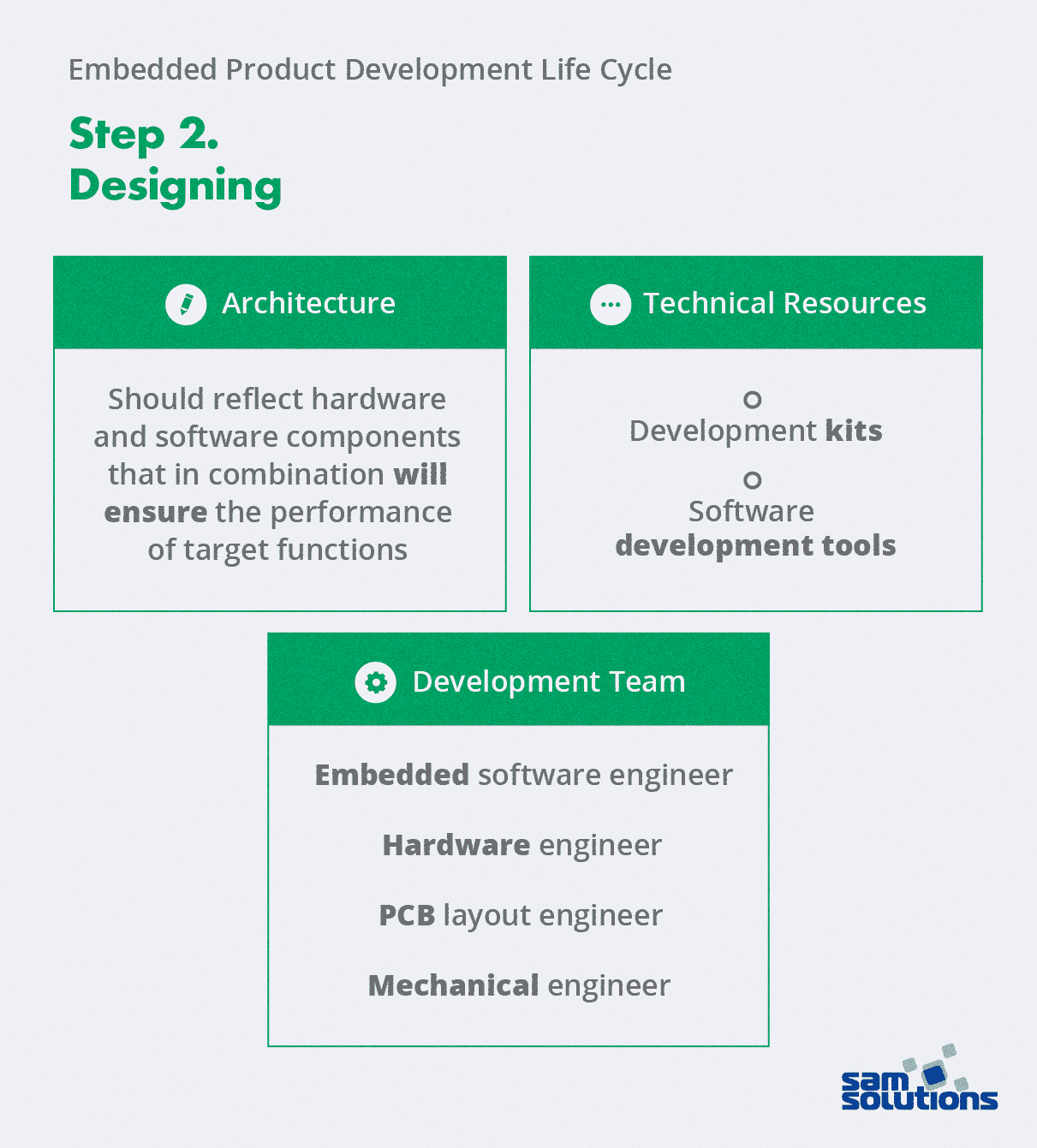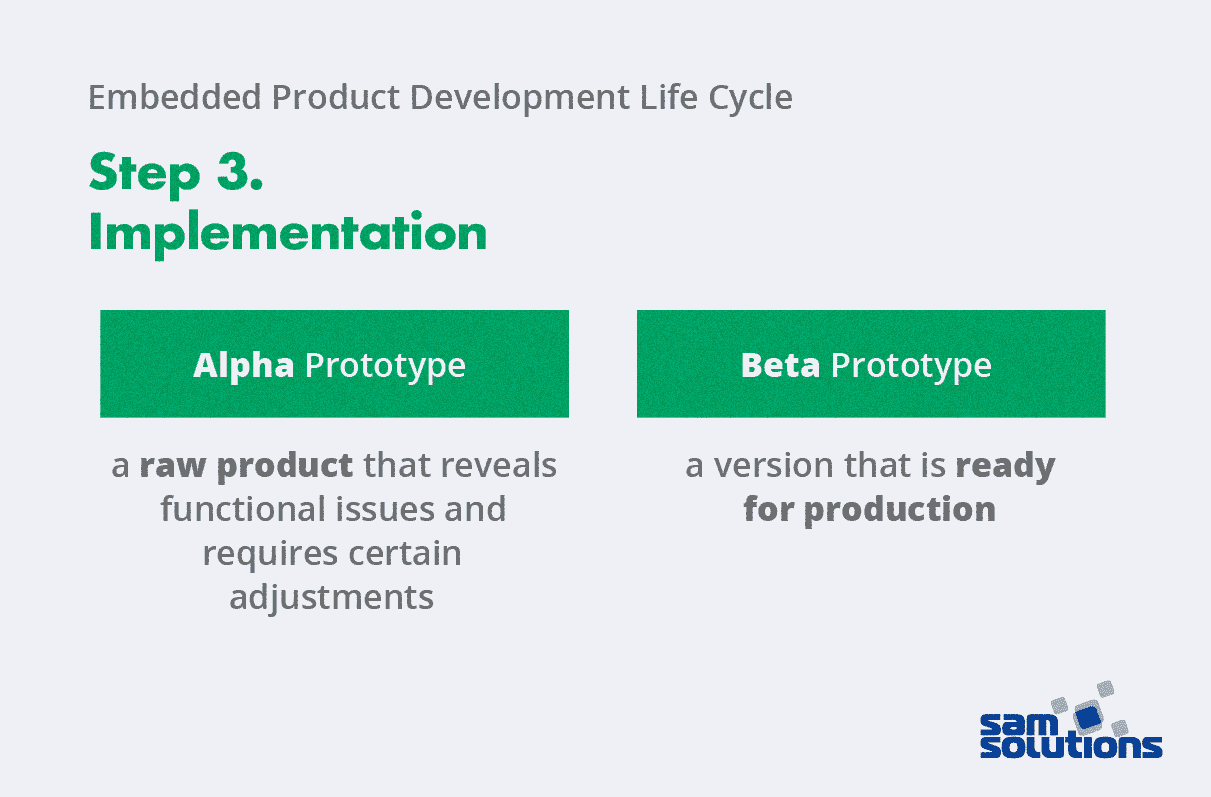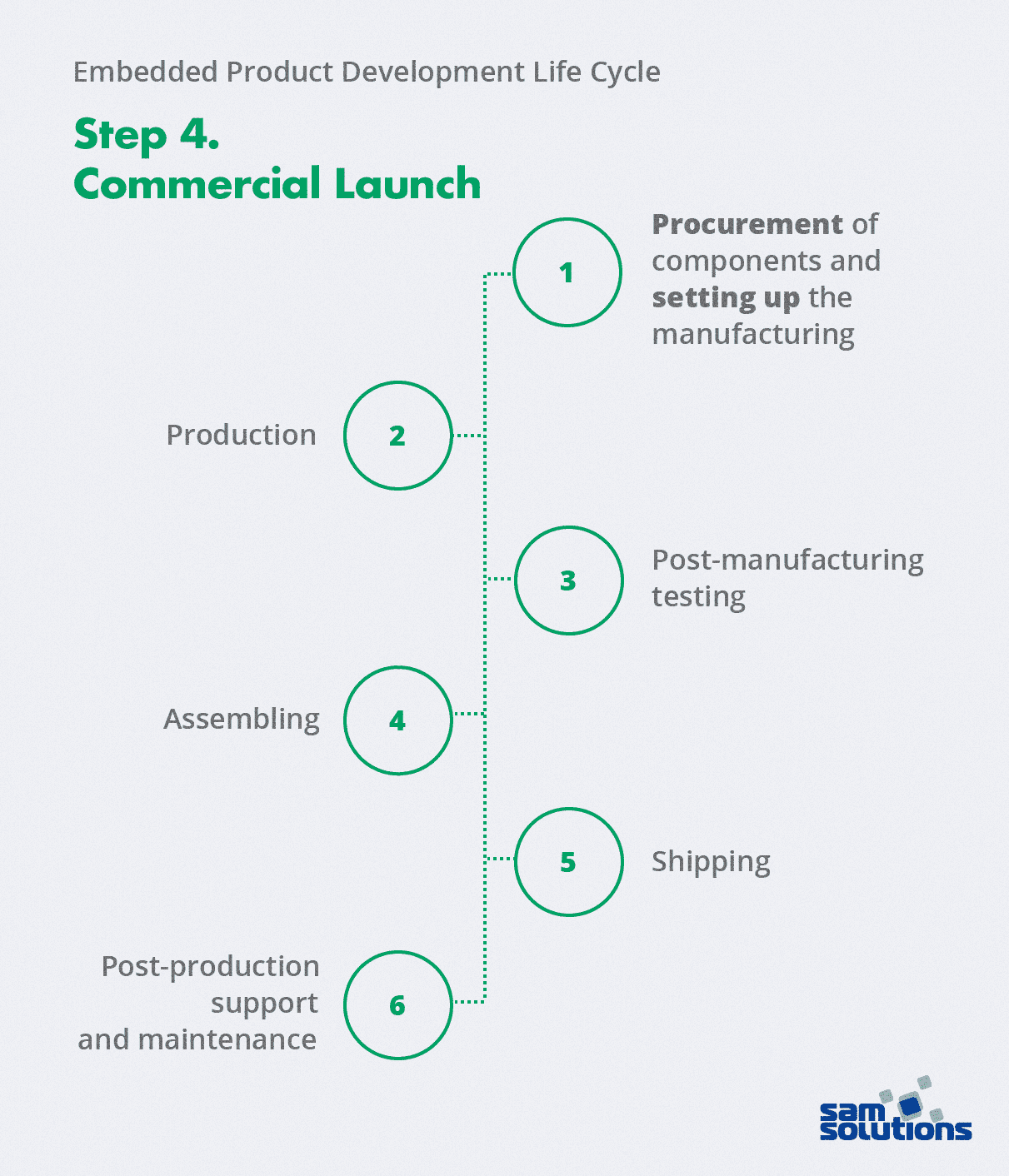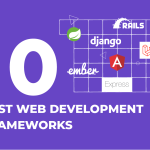Embedded solutions have become an integral part of the numerous devices we use daily: home appliances, mobile phones, cars and vehicles, medical equipment and more.
This article provides the general blueprint that you can apply in your project to develop and launch an embedded system.
Choose SaM Solutions for your embedded and firmware development needs and take advantage of our extensive experience in the industry.
4 Steps of the Embedded (or IoT) Product Development Life Cycle
Embedded and IoT products have much in common: they integrate software and hardware based on processors or microcontrollers for performing predefined functions.
The difference is that IoT solutions need to be connected to the network, so your job is to choose the right connectivity options for them.
In other respects, the development life cycles for IoT and embedded products have similar stages:
- Planning and analysis
- Designing
- Implementation
- Commercial launch
This is the basic plan, but keep in mind that each step comprises substeps that may vary in various projects. Let’s take a look at these in detail.
Step 1. Planning and Analysis

The development life cycle of any product is about going from an idea to commercial production. What’s the first step in creating an embedded or IoT system?
The first step is to clearly define your business idea and transform it into a feasible concept. Consider and analyze the following points.
The Need
As a rule, the process starts as a response to a particular need (personal, corporate, or public). It may be necessary to build an entirely new solution or reengineer one already available by adding functionality or launching a new version. You should realize the essence of the need behind your idea.
Target Audience
When the need is clear, you should define your target audience. This step is often undeservingly overlooked, but it’s crucial to understand who your end users are.
To analyze the market and single out your audience, consider the following points:
- End users of your product
- Characteristics of your end users (gender, age, profession, etc.)
- In what circumstances they will need your product
- What benefits users will get from your product
Researching these points will help you outline your vision for your future device.
Requirements
Any embedded product aims to solve a particular problem. Thus, a device should correspond with specific requirements concerning its functionality and appearance. Work out what these requirements are before you get down to the development.
How can you work out the requirements?
Take the data you’ve collected during the research of your target audience, and use it to define the purpose of your product, its functional model, and the necessary hardware and software components.
Competitors
When you go through the planning and analysis phase, we highly recommend you acquaint yourself with the experience of your potential competitors. Some of them have already gone through the development life cycle of embedded systems and achieved certain results.
Looking at their experiences can help you learn from their mistakes, give you some brilliant ideas, or prompt a better approach for your project. Analyzing your competitors’ products will enable you to define the price policy and anticipate end users’ reactions to your output.
Additionally, you might even connect with potential collaborators who can probably help you reach new heights.
Step 2. Designing

As soon as you have a viable concept for an embedded solution, you can move ahead with designing the prototype. At this stage, you should choose a development approach that will allow you to implement your idea within budget.
Architecture
The process begins with the creation of the product’s architecture, which should be based on the requirements collected in the previous (planning and analysis) step. In architecture, you should reflect software and hardware components that in combination will ensure the performance of target functions.
Technical Resources
Based on the architecture, you need to choose technologies and tools to develop a proof-of-concept — a small model to prove the feasibility of your idea.
Development Kits
To quickly build embedded and IoT prototypes, you can use development kits or boards — out-of-the-box hardware platforms that can have integrated software, such as:
- processor modules
- microcontroller kits
- application processor kits
- breakout boards.
When choosing a development board, pay attention to the following key features:
- Available peripherals
- Connectors for bringing out microcontroller pins
- On-board sensors and communication peripherals (accelerometers, fuel sensors, Wi-Fi, Bluetooth, etc.)
- The way you can mount the mechanical form factor in a prototype cover
Toradex is a reliable provider of hardware modules for creating embedded and IoT solutions.
Software Development Tools
Apart from hardware, you should also choose from a range of embedded software development tools. You will need:
- operating systems (Linux, RTOS)
- languages (C, C++, Python, JavaScript, etc.)
- IDEs, SDKs (PyCharm, WebStorm, Qt Creator), compilers, debuggers, and more.
Development Team
It goes without saying that you should assemble a development team. There are two ways:
- Hire employees with the appropriate skills and do the work on-site.
- Outsource software development to a reliable provider.
The complexity of a project influences the number of technical specialists you will need. Generally, an embedded product development team consists of:
- an embedded software engineer
- a hardware engineer
- a PCB layout engineer
- a mechanical engineer.
A software engineer is responsible for the code and software architecture. A hardware engineer deals with hardware architecture, components and schematics. A PCB layout engineer builds the Gerber files according to the schematics necessary to manufacture the product. Actually, a hardware engineer can perform this role in small teams. A mechanical engineer designs the product body and creates the industrial design for further manufacturing.
Additionally, you may need to use specialists experienced in cloud-based software development, security management and team management.
Hiring all these experts to develop a product on-premises can be a rather expensive and risky activity for a company. In most cases, it is more reasonable to work with a technology partner that specializes in embedded software development.
Step 3. Implementation

Once the concept is proven to be viable, it’s time to turn it into reality. At this phase, you create a prototype — a working model of your IoT or embedded product that can be tested and extended by new features. The implementation phase is also about improving the quality of your solution and preparing it for production.
Alpha Prototype
When you fully integrate your device’s hardware components on a PCB (printed circuit board), you get an alpha prototype. This is a raw product that reveals functional issues and requires certain adjustments.
Beta Prototype
By addressing issues and extending the product by new features, you get a beta prototype — a version that is ready for production.
End users can test this version and provide feedback to help enhance the quality. Moreover, you can apply a range of other tests to ensure your solution operates as expected.
At this point of the embedded product development life cycle, software engineers should check that the application meets regulatory standards, and ensure its security, scalability and maintainability. The question of updating your product when it is in operation should also be considered.
You should also find investment opportunities for future production.
Step 4. Commercial Launch

At this point, you have a real-life product that can be launched to mass production. The commercial launch phase is also quite complicated.
You can’t start the production immediately. It may take time to procure the spare parts and set up the manufacturing process, which is why you should plan to go to market in plenty of time, up to three months.
Don’t forget about post-manufacturing testing to reveal any defects in the production process and prevent defective products from going to customers.
Once produced boards have been tried and tested, you can assemble them into their cover and deliver them to users.
Post-production support and maintenance is a necessary activity during the embedded product development life cycle.
Our Embedded Experience
Embedded development is among the core competencies SaM Solutions offers to its clients. We have successfully completed dozens of projects, both for large and small companies. The range of end-to-end services we offer includes:
- Embedded software development
- IoT solution development
- Custom firmware development
- Linux device driver development
Examples of Implemented Projects
Why Create Embedded and IoT Solutions?
Smart devices are currently among the top trends in technology. You can hardly find an industry that doesn’t use or can’t benefit from embedded or IoT products.
These devices help businesses monitor various processes and improve their efficiency. Moreover, embedded systems can be used for predictive maintenance in manufacturing, which helps avoid significant equipment failure and downtime.
The functionality of embedded devices has become more complicated nowadays, which is why the development process has turned into a challenging task.
SaM Solutions has successfully completed numerous projects for small and large companies. We provide all types of services, including consulting, Linux device driver development, complete custom development from idea to launch and long-lasting maintenance. Don’t hesitate to contact us.



























 5 Reasons Why Your Business Needs a Mobile eCommerce Application
5 Reasons Why Your Business Needs a Mobile eCommerce Application Using Salesforce to Improve Your Sales Pipeline: Five Tips
Using Salesforce to Improve Your Sales Pipeline: Five Tips Cross-Platform Mobile Development: Five Best Frameworks
Cross-Platform Mobile Development: Five Best Frameworks How to Develop Custom Accounting Software
How to Develop Custom Accounting Software 10 Best Web Development Frameworks in 2024
10 Best Web Development Frameworks in 2024














 Top 30 Ecommerce Tools to Elevate Your Business in 2024
Top 30 Ecommerce Tools to Elevate Your Business in 2024 5 Best Tools to Improve Embedded Software Testing
5 Best Tools to Improve Embedded Software Testing Why React and Node.js Are the Top Technologies for Creating High-Performance Web Apps in 2024
Why React and Node.js Are the Top Technologies for Creating High-Performance Web Apps in 2024 10 Best IoT Platforms for 2024
10 Best IoT Platforms for 2024
My partner and I absolutely love your blog and find the majority of your post’s to be what precisely I’m looking for.
Really appreciate your great article!
Can I simply just say what a relief to find someone that actually knows what they’re discussing over the internet. You certainly understand how to bring an issue to light and make it important.
More people should read this and understand this side of the story.
It’s surprising you are not more popular since you definitely possess the gift.
This site was… how do I say it? Relevant!! Finally I’ve found something that helped me. Thanks a lot!
Great articles thanks for sharing this
Hi my friend! I wish to say that this article is awesome, great written and come with approximately all vital infos.
I’d like to look more posts like this .